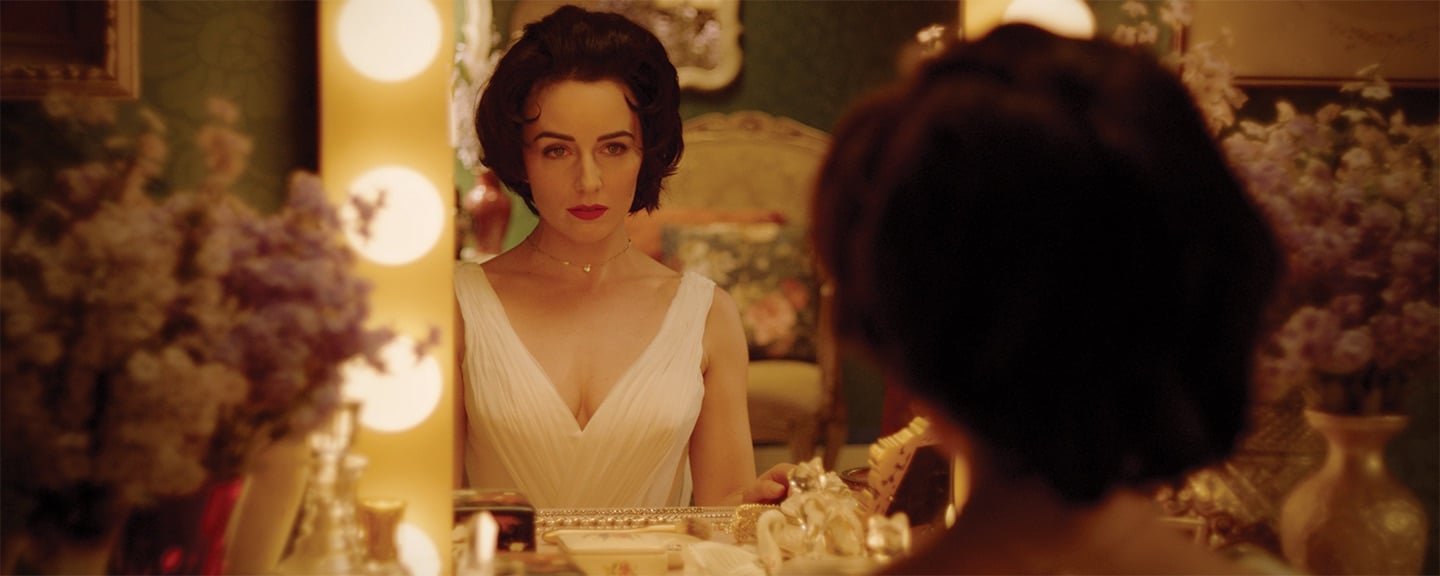
Finding Strength: Dame
Cinematographer Katharine White adds a sensitive visual approach to this short film about actor Elizabeth Taylor.
Few classical Hollywood stars were more recognizable for both their professional and personal lives than Elizabeth Taylor. Writer-actor-producer Grace Kendall wanted to give Taylor’s story a nuanced treatment in Dame — a short-form production that follows the late actor on her first day back at work on the set of Cat on a Hot Tin Roof following the sudden death of her husband Mike Todd.
“I’d wanted to tell Elizabeth Taylor’s story for a long time,” says Kendall, who bears a physical resemblance to the Golden Age icon. “I wrote about this moment in Elizabeth’s life to tell the story of a woman overcoming a tragic loss and stepping into her power.”
Kendall assembled a primarily female production team for the short, beginning with director Foster Wilson. “In learning more about Elizabeth’s personal story, I became really connected to the human, the woman going through this loss and coming out courageously on the other side,” says Wilson. “When I met with Grace, we sort of instantly connected over persevering through grief. And the first thing I said was, ‘You have to hire Katharine White to shoot this.”
Wilson and White had collaborated as director and cinematographer on five projects since 2017 before teaming up again for Dame. “Katharine thinks about lighting first, whereas I think about camera first,” Wilson continues. “That’s part of what makes us an excellent team.”
On the importance of hiring a diverse crew, White says, “Early on in my career, I met several female directors — Foster among them — who took a chance on me as a young cinematographer. They created inclusive sets that were exciting to be a part of, and I saw firsthand how impactful conscious use of hiring power could be. Every decision has the potential to push the needle forward. It’s hugely important to me to use whatever leverage I have to continue creating space at the table for women, people of color, and other minorities. Diversity behind the camera only benefits the stories we tell and the visual language we create to tell them.”
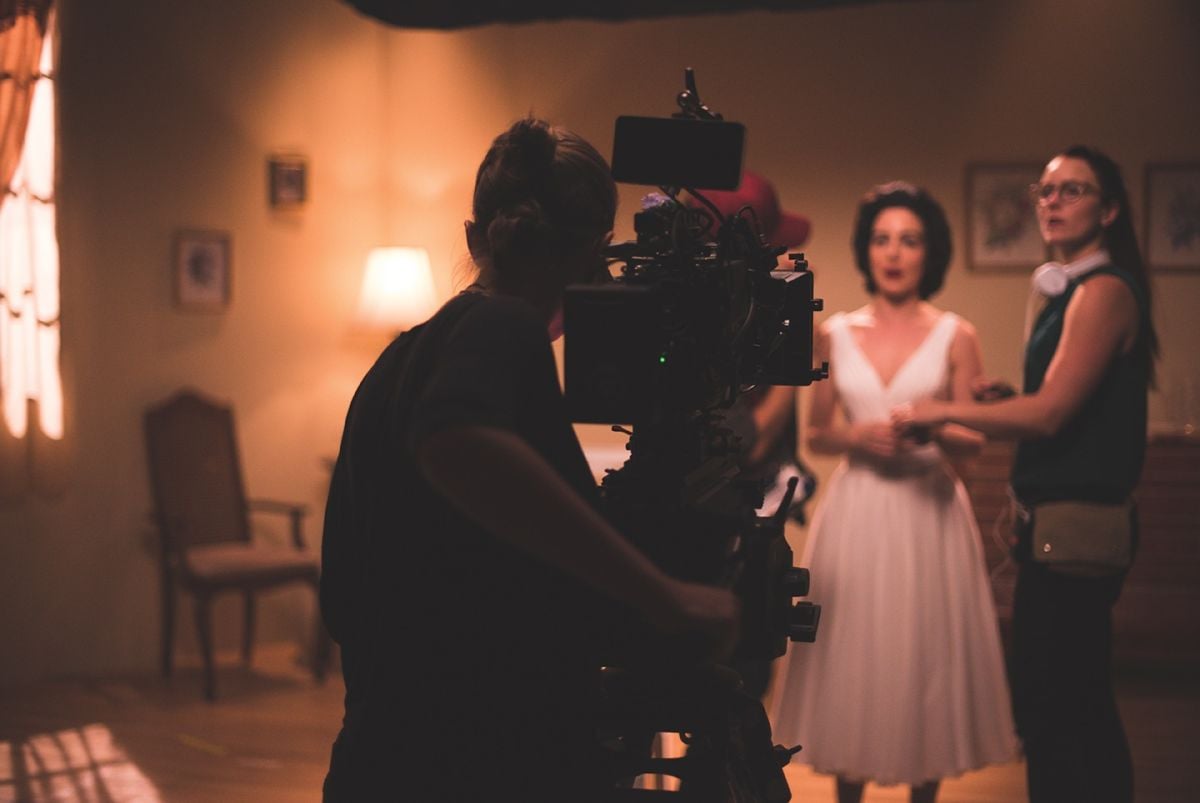
Together, the filmmakers created a mix of visuals for the eight-minute short — a classical Hollywood look on the movie set and a more intimate, modern aesthetic for Taylor’s private moments. “At the beginning of Dame, our cinematography is much more clinical — it’s about how the public perceives Elizabeth, so we are distanced from her,” White says, adding that they accomplished this by using wider lenses. “When we move into her dressing room, we wanted it to feel like a personal moment — an intimate moment in which we’re sharing her grief. Being able to go up to the 75mm and even the 100mm lens with the aperture wide open gives us such a visual shift. We wanted that contrast, as compared to the beginning of the film.
The production showcases two long Steadicam sequences that encompass essentially 360 degrees of the set, then track the protagonist through pools of light along a backstage passageway as she moves from one look to the other — from stage to dressing room — then back again.
White shot Dame with an Arri Alexa Miniand Cooke Panchro/i Classicprime lenses. “I think pairing Cooke lenses with Alexas gives you a much more filmic feel,” she says. “I shoot a lot with vintage, sometimes even uncoated lenses. They help break down the digital barrier.”
The filmmakers sourced their camera and lens package at BeCine, a rental house founded by cinematographer Bianca Halpern that is operated mainly by women. “BeCine has given me incredible support,” White notes. “They’re super supportive to young cinematographers, and to female cinematographers.”
The company’s offerings include childcare on prep days. “That’s the idea behind the name: be cine,” says Halpern. “Live the cinematography life. It’s how you can keep evolving and find the work-life balance.
“It’s also important to me to give filmmakers who don’t yet have big budgets access to good glass, because I’ve had that problem as a cinematographer,” Halpern adds. “For Dame, I recommended the Cooke Panchros to Katharine, and we were able to present her with different sets and find what worked creatively.”
Dame’s principal photography took place on a single day, so thorough prep was vital. “Grace had done intense character work with her acting coaches,” Wilson says, “so ‘Elizabeth’ was already there when we got to set, and Katharine and I could be present in the moment and focus on crafting this story.”
The main challenges, says White, arose from lighting the space to achieve the shots they wanted, especially the 360-degree views. “We knew everything wouldn’t coalesce in one day,” the cinematographer says. “We spent a full 12 hours on the first day prelighting, so we could get all of our lights off the ground and start doing camera rehearsals. That left final tweaks for the morning of the shooting day.
“There was no overhead grid at the location, which was a large part of why we needed the full prelight day,” White says. “My longtime gaffer Dave Wilwayco worked wonders with this space.
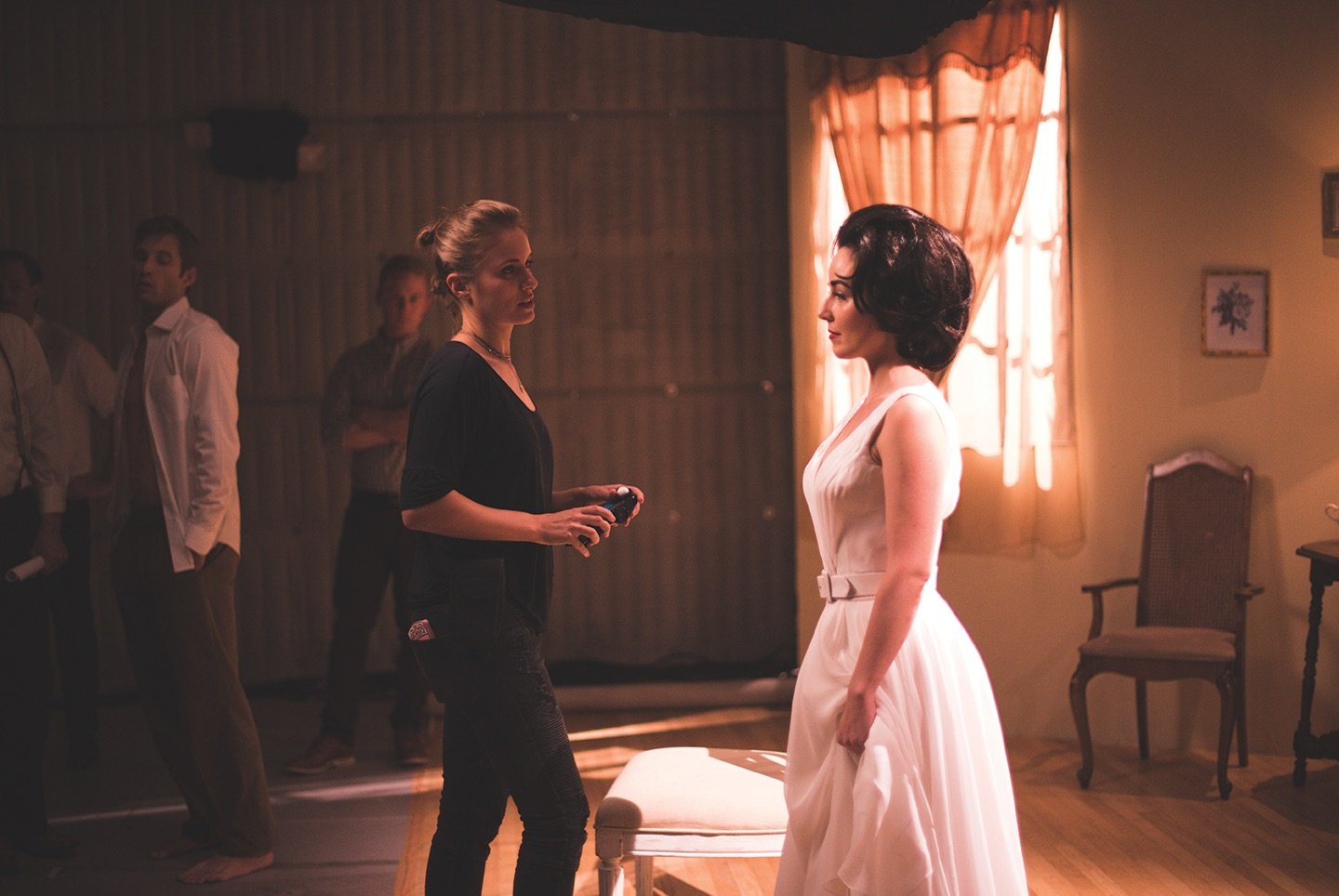
“Foster and I conceptualized three different lighting environments,” White says — the stage set, the dressing room, and the hallway that connects them.
“The stage set, which was meant to evoke the brightly lit classic Hollywood soundstage look, was our most complex. For ambient light, we rigged a 12-by-12 soft box with bi-color 8-foot Quasars and ½ Silent Grid on a pulley system above the set. A Skypanel S60 with a Chimera gave us a soft frontal key light. Mole-Richardson tungsten Fresnel 150-watts were used as edge and hair lights. Tungsten Fresnel 650s, a 2K and a 5K all functioned as practicals, and flared the lens at various places.
“The dressing room is warm and intimate. The ambience was created with six practical lamps; each had a 50 or 60-watt soft-white incandescent bulb on its own dimmer. Elizabeth’s key light was a [LiteGear] LiteMat 4L on a menace arm filling out the frontal push from the vanity mirror, which was also on a dimmer.”
The hallway, which leads from the stage-set to the dressing room, “has pools of light and shadow, creating a transitional space,” White says. “We used three Mole-Richardson 300-watt tungsten Fresnels, and [fitted them with] snoots.” At the end of the hallway was the entrance to the dressing room, where a wash of red light was produced by a 2' Quasar Science Crossfade bi-color with Lee Primary Red gel — which Taylor steps into just as her tragic loss is verbally addressed for the first and only time in the piece.
The sequence in which Taylor walks through the pools of light from the stage to her dressing room is White’s “favorite moment in the film,” she says. “There’s all the out-of-focus texture from the stage in the background and the subtle lens flares from the tungsten bulbs, and then we swing right around into that red Quasar punch at the end of that walk. It was a lot of fun to blend newer and older sources in that way.
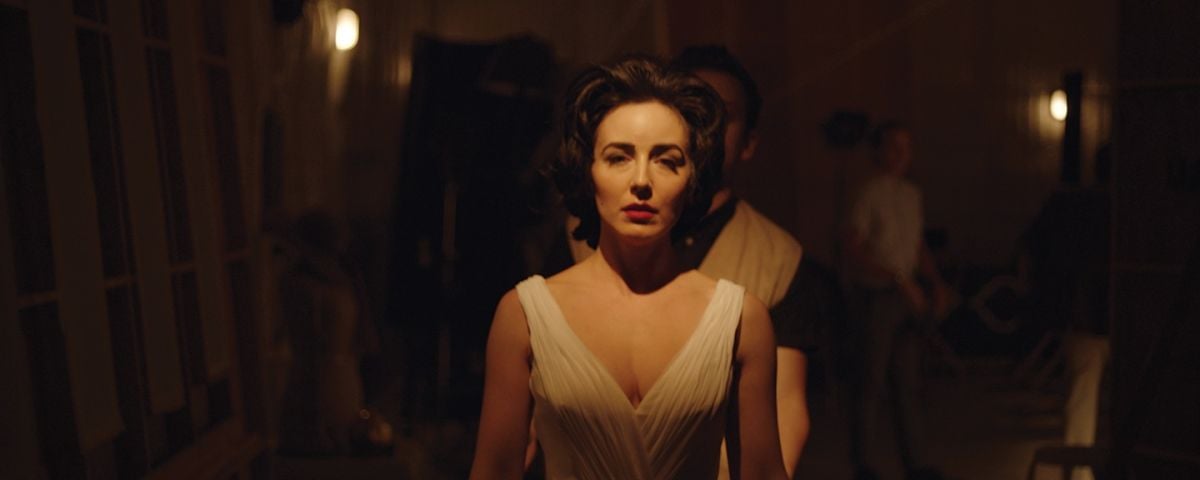
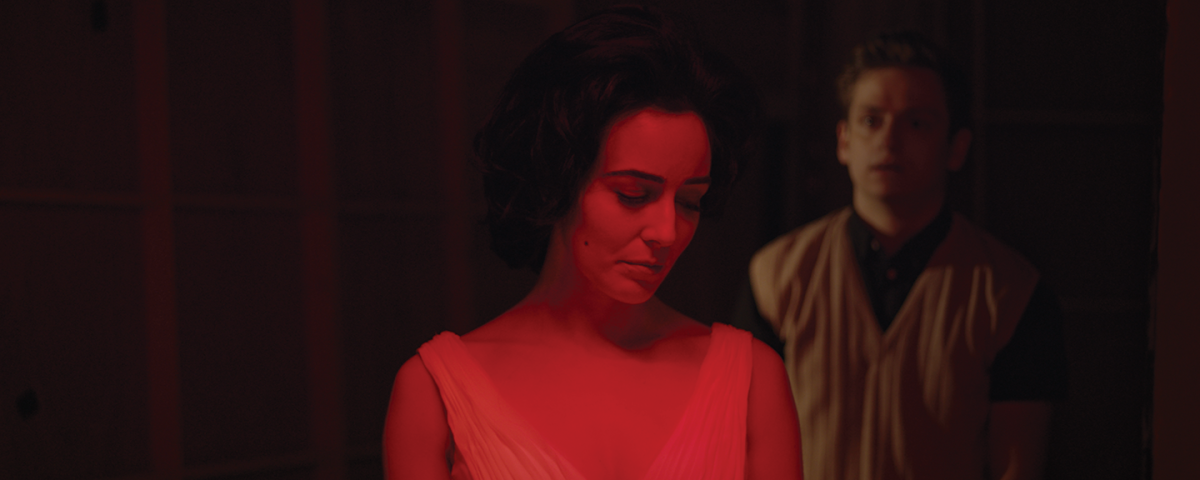
White found shooting Dame to be highly rewarding, in part because her own professional experience in some ways mirrored Taylor’s emotional arc in the narrative. “When I started in grip and electric, it was very common for me to be the only woman, which could be an isolating experience. We start Dame with Elizabeth feeling very much alone, and we end with this moment that kind of recontextualizes her as triumphant and respected — someone who has really stepped into her power. Shooting that moment as a female cinematographer working with a largely female and BIPOC crew, I felt like we were shooting the moment where a lot of our own stories began.”






